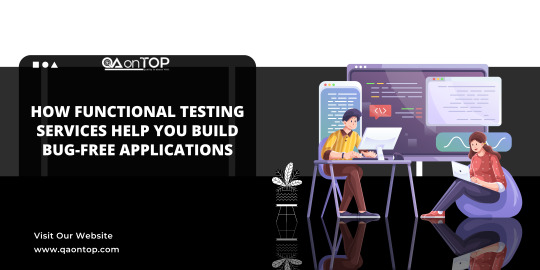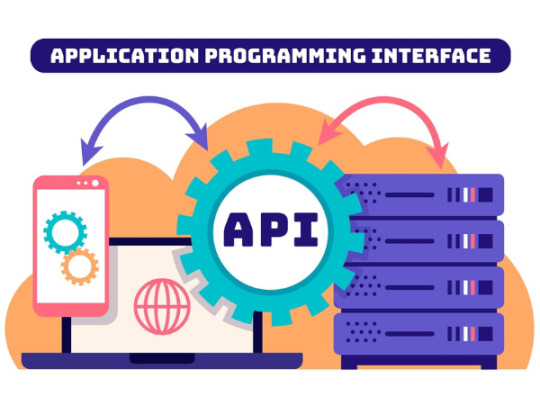#Aviation API
Explore tagged Tumblr posts
Text
Aviation API - Revolutionizing the Aviation Industry with Smart Technology
The aviation industry is evolving rapidly, and technology plays a crucial role in making air travel safer, more efficient, and customer-friendly. One of the most significant innovations driving this change is the Aviation API. At API Market, we understand how important it is for developers and businesses to access reliable aviation data and tools quickly and easily. That’s why we offer a streamlined platform where you can discover, buy, and integrate top-quality Aviation APIs tailored for the aviation sector.
What Is an Aviation API and Why Does It Matter?
An Aviation API is a set of tools and protocols that allows applications to connect with aviation-related data and services. This can include flight status updates, aircraft tracking, airport information, weather conditions, and even booking and ticketing details. By integrating an Aviation API, companies can enhance their applications to deliver real-time, accurate information to travelers, airlines, and other aviation stakeholders. With so much data involved in aviation operations, manual handling becomes inefficient and error-prone. Here’s where Aviation APIs come in - they automate data exchange, improve accuracy, and enable businesses to offer innovative features such as personalized travel updates, predictive analytics, and optimized flight management.
How API Market Simplifies Access to Aviation API
At API Market, we provide a unified platform connecting developers and businesses with a wide range of APIs, including powerful Aviation API. Our marketplace makes it easy to search, test, and buy the exact API you need without any hassle. Whether you want live flight tracking or airport information, our platform offers clear documentation and transparent pricing to help you make the best choice. Because the aviation sector demands high reliability and security, API Market ensures that all listed Aviation APIs meet strict standards. You can monitor API performance and manage secure access controls directly from our platform. This means your application stays dependable, and you maintain full control over how APIs are used.
Benefits of Using an Aviation API
Real-time Data Access: Receive instant updates about flights, delays, and weather changes.
Improved Customer Experience: Deliver accurate information that keeps travelers informed and stress-free.
Operational Efficiency: Automate data workflows and reduce manual errors.
Faster Product Development: With ready-to-use APIs, developers can build aviation apps quicker and smarter.
Scalability: Easily scale your services as your user base grows.
Why Choose API Market for Your Aviation API Needs?
Navigating the world of APIs can be overwhelming, but API Market makes it straightforward. Our platform brings together a diverse selection of aviation-related APIs, giving you options to find the right fit for your project. You can try APIs before buying, review detailed documentation, and rely on secure integration processes. By using API Market, you not only gain access to advanced Aviation APIs, but you also join a community of innovators committed to pushing the aviation industry forward. Our platform bridges the gap between API providers and businesses, creating opportunities for collaboration and growth. If you’re ready to transform your aviation-related services with smart technology, explore our Aviation API offerings on API Market today. Seamless integration, transparent pricing, and trusted performance await you. Visit API Market to start your journey.
0 notes
Text
Building Trust Into AI Is the New Baseline
New Post has been published on https://thedigitalinsider.com/building-trust-into-ai-is-the-new-baseline/
Building Trust Into AI Is the New Baseline


AI is expanding rapidly, and like any technology maturing quickly, it requires well-defined boundaries – clear, intentional, and built not just to restrict, but to protect and empower. This holds especially true as AI is nearly embedded in every aspect of our personal and professional lives.
As leaders in AI, we stand at a pivotal moment. On one hand, we have models that learn and adapt faster than any technology before. On the other hand, a rising responsibility to ensure they operate with safety, integrity, and deep human alignment. This isn’t a luxury—it’s the foundation of truly trustworthy AI.
Trust matters most today
The past few years have seen remarkable advances in language models, multimodal reasoning, and agentic AI. But with each step forward, the stakes get higher. AI is shaping business decisions, and we’ve seen that even the smallest missteps have great consequences.
Take AI in the courtroom, for example. We’ve all heard stories of lawyers relying on AI-generated arguments, only to find the models fabricated cases, sometimes resulting in disciplinary action or worse, a loss of license. In fact, legal models have been shown to hallucinate in at least one out of every six benchmark queries. Even more concerning are instances like the tragic case involving Character.AI, who since updated their safety features, where a chatbot was linked to a teen’s suicide. These examples highlight the real-world risks of unchecked AI and the critical responsibility we carry as tech leaders, not just to build smarter tools, but to build responsibly, with humanity at the core.
The Character.AI case is a sobering reminder of why trust must be built into the foundation of conversational AI, where models don’t just reply but engage, interpret, and adapt in real time. In voice-driven or high-stakes interactions, even a single hallucinated answer or off-key response can erode trust or cause real harm. Guardrails – our technical, procedural, and ethical safeguards -aren’t optional; they’re essential for moving fast while protecting what matters most: human safety, ethical integrity, and enduring trust.
The evolution of safe, aligned AI
Guardrails aren’t new. In traditional software, we’ve always had validation rules, role-based access, and compliance checks. But AI introduces a new level of unpredictability: emergent behaviors, unintended outputs, and opaque reasoning.
Modern AI safety is now multi-dimensional. Some core concepts include:
Behavioral alignment through techniques like Reinforcement Learning from Human Feedback (RLHF) and Constitutional AI, when you give the model a set of guiding “principles” — sort of like a mini-ethics code
Governance frameworks that integrate policy, ethics, and review cycles
Real-time tooling to dynamically detect, filter, or correct responses
The anatomy of AI guardrails
McKinsey defines guardrails as systems designed to monitor, evaluate, and correct AI-generated content to ensure safety, accuracy, and ethical alignment. These guardrails rely on a mix of rule-based and AI-driven components, such as checkers, correctors, and coordinating agents, to detect issues like bias, Personally Identifiable Information (PII), or harmful content and automatically refine outputs before delivery.
Let’s break it down:
Before a prompt even reaches the model, input guardrails evaluate intent, safety, and access permissions. This includes filtering and sanitizing prompts to reject anything unsafe or nonsensical, enforcing access control for sensitive APIs or enterprise data, and detecting whether the user’s intent matches an approved use case.
Once the model produces a response, output guardrails step in to assess and refine it. They filter out toxic language, hate speech, or misinformation, suppress or rewrite unsafe replies in real time, and use bias mitigation or fact-checking tools to reduce hallucinations and ground responses in factual context.
Behavioral guardrails govern how models behave over time, particularly in multi-step or context-sensitive interactions. These include limiting memory to prevent prompt manipulation, constraining token flow to avoid injection attacks, and defining boundaries for what the model is not allowed to do.
These technical systems for guardrails work best when embedded across multiple layers of the AI stack.
A modular approach ensures that safeguards are redundant and resilient, catching failures at different points and reducing the risk of single points of failure. At the model level, techniques like RLHF and Constitutional AI help shape core behavior, embedding safety directly into how the model thinks and responds. The middleware layer wraps around the model to intercept inputs and outputs in real time, filtering toxic language, scanning for sensitive data, and re-routing when necessary. At the workflow level, guardrails coordinate logic and access across multi-step processes or integrated systems, ensuring the AI respects permissions, follows business rules, and behaves predictably in complex environments.
At a broader level, systemic and governance guardrails provide oversight throughout the AI lifecycle. Audit logs ensure transparency and traceability, human-in-the-loop processes bring in expert review, and access controls determine who can modify or invoke the model. Some organizations also implement ethics boards to guide responsible AI development with cross-functional input.
Conversational AI: where guardrails really get tested
Conversational AI brings a distinct set of challenges: real-time interactions, unpredictable user input, and a high bar for maintaining both usefulness and safety. In these settings, guardrails aren’t just content filters — they help shape tone, enforce boundaries, and determine when to escalate or deflect sensitive topics. That might mean rerouting medical questions to licensed professionals, detecting and de-escalating abusive language, or maintaining compliance by ensuring scripts stay within regulatory lines.
In frontline environments like customer service or field operations, there’s even less room for error. A single hallucinated answer or off-key response can erode trust or lead to real consequences. For example, a major airline faced a lawsuit after its AI chatbot gave a customer incorrect information about bereavement discounts. The court ultimately held the company accountable for the chatbot’s response. No one wins in these situations. That’s why it’s on us, as technology providers, to take full responsibility for the AI we put into the hands of our customers.
Building guardrails is everyone’s job
Guardrails should be treated not only as a technical feat but also as a mindset that needs to be embedded across every phase of the development cycle. While automation can flag obvious issues, judgment, empathy, and context still require human oversight. In high-stakes or ambiguous situations, people are essential to making AI safe, not just as a fallback, but as a core part of the system.
To truly operationalize guardrails, they need to be woven into the software development lifecycle, not tacked on at the end. That means embedding responsibility across every phase and every role. Product managers define what the AI should and shouldn’t do. Designers set user expectations and create graceful recovery paths. Engineers build in fallbacks, monitoring, and moderation hooks. QA teams test edge cases and simulate misuse. Legal and compliance translate policies into logic. Support teams serve as the human safety net. And managers must prioritize trust and safety from the top down, making space on the roadmap and rewarding thoughtful, responsible development. Even the best models will miss subtle cues, and that’s where well-trained teams and clear escalation paths become the final layer of defense, keeping AI grounded in human values.
Measuring trust: How to know guardrails are working
You can’t manage what you don’t measure. If trust is the goal, we need clear definitions of what success looks like, beyond uptime or latency. Key metrics for evaluating guardrails include safety precision (how often harmful outputs are successfully blocked vs. false positives), intervention rates (how frequently humans step in), and recovery performance (how well the system apologizes, redirects, or de-escalates after a failure). Signals like user sentiment, drop-off rates, and repeated confusion can offer insight into whether users actually feel safe and understood. And importantly, adaptability, how quickly the system incorporates feedback, is a strong indicator of long-term reliability.
Guardrails shouldn’t be static. They should evolve based on real-world usage, edge cases, and system blind spots. Continuous evaluation helps reveal where safeguards are working, where they’re too rigid or lenient, and how the model responds when tested. Without visibility into how guardrails perform over time, we risk treating them as checkboxes instead of the dynamic systems they need to be.
That said, even the best-designed guardrails face inherent tradeoffs. Overblocking can frustrate users; underblocking can cause harm. Tuning the balance between safety and usefulness is a constant challenge. Guardrails themselves can introduce new vulnerabilities — from prompt injection to encoded bias. They must be explainable, fair, and adjustable, or they risk becoming just another layer of opacity.
Looking ahead
As AI becomes more conversational, integrated into workflows, and capable of handling tasks independently, its responses need to be reliable and responsible. In fields like legal, aviation, entertainment, customer service, and frontline operations, even a single AI-generated response can influence a decision or trigger an action. Guardrails help ensure that these interactions are safe and aligned with real-world expectations. The goal isn’t just to build smarter tools, it’s to build tools people can trust. And in conversational AI, trust isn’t a bonus. It’s the baseline.
#access control#Agentic AI#agents#ai#ai alignment#AI Chatbot#AI development#AI guardrails#ai safety#ai-generated content#aiOla#Anatomy#APIs#approach#audit#automation#aviation#Behavior#benchmark#Bias#boards#Building#Business#challenge#Character.AI#chatbot#compliance#content#continuous#conversational ai
0 notes
Text

Take your airline communication to new heights with SMS Gateway Center!
✈️ Deliver instant updates to passengers with Bulk SMS and WhatsApp Business API—perfect for flight alerts, booking confirmations, and more. Elevate your aviation services today! 👉 https://www.smsgatewaycenter.com/bulk-sms-whatsapp-airlines-aviation/
#SMSGatewayCenter#BulkSMS#WhatsAppAviation#AviationMarketing#AirlineCommunication#TravelTech#PassengerEngagement#SMSMarketing#WhatsAppBusinessAPI#AviationSolution
2 notes
·
View notes
Text

Lockheed Martin delivers 75º APY-9 radar for the E-2D Advanced Hawkeye built by Northrop Grumman
Setting the standard in the development and delivery of Airborne Early Warning (AEW) radars.
Fernando Valduga By Fernando Valduga 01/30/2024 - 16:00 in Military
Lockheed Martin, under contract with Northrop Grumman for the U.S. Navy's E-2D Advanced Hawkeye, delivered the 75º APY-9 radar that provides the U.S. Navy with information mastery through revolutionary sensor capability. More Hawkeyes were built and delivered than any other AEW platform in the world.
“As the primary sensor of the E-2D, the APY-9 radar has a long legacy of providing agile deterrence for greater security of the 21st century,” said Chandra Marshall, vice president of radar systems and sensors business at Lockheed Martin. “Our main focus is to bring our military and women home safely, and the APY-9 sets this standard for all other AEW radars.”
The newest Advanced Hawkeye variant is at the forefront of technological capacity, largely due to Lockheed Martin's APY-9 radar. The E-2 built by Northrop Grumman has become known as the "fleet eyes" of the U.S. Navy due to its ability to simultaneously monitor the air, land and sea. Whenever a Navy aircraft carrier has aircraft in the air, there is an APY-9 radar in operation, protecting the United States and its allies.

The U.S. Navy financed 80 of the 86 aircraft of the current purchase program. Japan bought 18 E-2D Hawkeyes and France bought three. With U.S. and international demand, APY-9 is expected to be in production by the end of the 2020s, and in modernization and support by the 2040s.
Lockheed Martin is a contributor to the E-2D built by Northrop Grumman for more than two decades. The E-2D Advanced Hawkeye platform provides critical and actionable data to enable decision mastery for joint forces and rescuers. These advances provide the armed forces with the necessary situational awareness to reduce the time between initial consciousness and active involvement.
Tags: Military AviationE-2D Advanced HawkeyeLockheed MartinNorthrop Grumman
Sharing
tweet
Fernando Valduga
Fernando Valduga
Aviation photographer and pilot since 1992, he has participated in several events and air operations, such as Cruzex, AirVenture, Dayton Airshow and FIDAE. He has works published in specialized aviation magazines in Brazil and abroad. He uses Canon equipment during his photographic work in the world of aviation.
Related news
MILITARY
UAS Aerosonde of Textron Systems performs operational flight from a Coastal Combat Ship
30/01/2024 - 14:00
Aurora's Liberty Lifter X-plane advanced in the preliminary tests.
MILITARY
Aurora modifies the design of the large Liberty Lifter aircraft
30/01/2024 - 09:00
MILITARY
Argentina decides to buy 24 American F-16 fighters instead of Chinese JF-17 jets
30/01/2024 - 06:00
BRAZILIAN AIR FORCE
VIDEO: See moment that FAB Super Tucano intercepts aircraft in Air Defense Identification Zone (ZIDA)
01/29/2024 - 23:48
HISTORY
14 years ago, I fled the first Su-57 (PAK FA)
29/01/2024 - 23:10
MILITARY
Czech Republic officially joins the global F-35 Lightning II team
29/01/2024 - 19:37
14 notes
·
View notes
Text
How Functional Testing Services Help You Build Bug-Free Applications

In the fast-paced world of software development, ensuring that applications perform as expected is critical to user satisfaction and business success. Functional software testing services play a pivotal role in verifying that software systems function correctly according to specified requirements. These services not only help in identifying bugs but also ensure a seamless user experience.
In this blog, we will explore what functional testing is, its types, benefits, methodologies, and how partnering with professional functional software testing service providers can elevate your product quality.
What is Functional Software Testing?
Functional testing is a type of software testing that validates the software system against the functional requirements or specifications. The goal is to ensure that each function of the software application operates in conformance with the requirement specification. It primarily focuses on:
User interface
APIs
Databases
Security
Client/server communication
Other application functionality
In simple terms, functional testing answers the question: "Does the software do what it's supposed to do?"
Why Functional Software Testing Services Matter
With increasing complexities in software systems and rising user expectations, testing has evolved into a specialized function. Here’s why functional software testing services are crucial:
1. Quality Assurance
Functional testing ensures that the product is reliable and meets the expected performance criteria. It validates that the business logic and workflows perform as designed.
2. User Satisfaction
By focusing on usability and function, functional testing helps enhance the user experience. It ensures that end-users can interact with the software without glitches or confusion.
3. Cost-Effectiveness
Detecting and fixing bugs early in the software development lifecycle significantly reduces the cost of fixing issues post-release. This is where professional testing services add immense value.
4. Compliance and Standards
Industries like healthcare, finance, and aviation demand stringent compliance with regulatory standards. Functional testing ensures that software adheres to these standards, avoiding legal and operational risks.
Types of Functional Software Testing
Professional functional software testing services encompass a wide range of testing types, including:
1. Unit Testing
Testing individual components or modules of a software system. It is usually automated and helps identify issues at an early development stage.
2. Integration Testing
Ensures that combined modules or systems work together as expected. It focuses on data flow and interface communication.
3. System Testing
Validates the complete and fully integrated software product to ensure it complies with the requirements.
4. Smoke Testing
Also known as "build verification testing," it is a high-level test to check whether the major functionalities are working.
5. Sanity Testing
Performed to verify whether a particular function or bug fix works after changes in the code.
6. Regression Testing
Ensures that new code changes do not adversely affect the existing functionalities of the application.
7. User Acceptance Testing (UAT)
Validates the end-to-end business flow. UAT is usually performed by end-users to confirm the system meets their needs.
Functional Testing Tools
Several tools are used by functional software testing service providers to automate and enhance the testing process. Popular tools include:
Selenium – Ideal for web applications.
QTP (UFT) – Offers robust functional and regression testing.
TestComplete – Automates desktop, web, and mobile application testing.
JUnit/NUnit – Commonly used for unit testing in Java/.NET environments.
SoapUI – For testing REST and SOAP APIs.
These tools help improve accuracy, speed up testing cycles, and reduce human error.
Best Practices in Functional Testing Services
Professional functional software testing services follow best practices to deliver optimal results:
Clear Requirement Understanding: Testers must have a deep understanding of the business logic and functional requirements.
Early Test Planning: Involving testing teams early in the development phase ensures better coverage and efficient test case design.
Comprehensive Test Scenarios: Cover positive and negative scenarios, edge cases, and integration points.
Use of Automation: Automate repetitive tasks and regression suites to save time and improve efficiency.
Continuous Testing and Feedback: In agile environments, continuous testing helps in early defect detection and faster delivery.
Choosing the Right Functional Testing Service Provider
Outsourcing functional testing can be a strategic move for many organizations. Here are factors to consider when selecting a service provider:
Experience and Expertise: Look for providers with proven experience in your industry.
Tool Proficiency: Ensure they have expertise in modern testing tools and automation frameworks.
Communication and Collaboration: Agile and DevOps require close collaboration between developers and testers.
Cost-Effectiveness: Evaluate ROI and not just upfront costs.
Data Security: Confirm the vendor follows strict data protection protocols.
Benefits of Outsourcing Functional Software Testing Services
Many companies now rely on third-party QA partners to handle their functional testing needs. Here’s why:
1. Scalability
Testing partners can scale up resources quickly to match project requirements, making them ideal for growing businesses.
2. Focus on Core Development
Outsourcing allows your internal teams to focus on core development while experts handle the quality assurance process.
3. Access to Latest Tools and Techniques
Testing service providers invest in the latest tools, training, and methodologies—giving your project a technological edge.
4. Risk Mitigation
Professionals with domain expertise help identify potential issues before they impact your users.
Real-World Applications of Functional Testing
E-commerce Platforms: Ensuring checkout processes, search functionality, and user registration work without issues.
Banking Software: Validating account management, fund transfers, and security measures.
Healthcare Systems: Testing patient records, appointment systems, and compliance with health data regulations.
Mobile Apps: Ensuring compatibility across devices and platforms, smooth user flows, and performance efficiency.
Conclusion
Functional software testing services are indispensable in today’s digital world. They ensure that your application behaves as intended, meets user expectations, and delivers a seamless experience. Whether you’re a startup or an enterprise, investing in professional functional testing services ensures your software is reliable, secure, and market-ready.Don’t let bugs define your brand. Partner with a QaOnTop software testing service provider and release your software with confidence.
0 notes
Text
Step-by-Step TYPO3 Website Creation with Brand Inspirations
TYPO3 isn’t about hype—it’s about results. Known for its robustness and versatility, it serves as the digital foundation for businesses and governments that require multilingual support, custom workflows, and seamless integrations.

TYPO3 isn't just another CMS—it's the engine behind complex, high-performance websites across the globe. In this blog, we’ll walk through some standout TYPO3 projects that reveal what makes this platform so trusted and adaptable.
Ready to see TYPO3 in action? Let’s dive in!
What Is TYPO3 and Who Uses It? TYPO3 is a free, open-source content management system designed for serious, large-scale websites. It’s secure, stable, and flexible, making it perfect for organizations that need to manage complex, multilingual sites.
It’s commonly used by universities, government agencies, non-profits, and big companies that require reliable content management and easy multi-site control.
Planning Your TYPO3 Website Start with clear goals and know who your visitors are. Organize your content well and choose the right TYPO3 version for your needs. The Long-Term Support (LTS) version offers extra stability. Add extensions for extra tools like forms, SEO, and language support.
How to Install TYPO3 Make sure your server supports:
PHP 7.4+
MySQL or MariaDB
Apache or Nginx
Composer (optional but recommended)
Steps to install:
Download TYPO3
Upload to your server
Create a database
Run the installer in your browser
Set up the first admin user
Configure user roles for editors
Designing Your Website Use TYPO3’s built-in templates or customize with the Fluid templating engine. TYPO3 supports responsive design, so your site looks great on phones, tablets, and desktops.
Managing Content The TYPO3 backend is user-friendly. Create and arrange pages with the page tree, add text, images, and videos easily, and manage multiple languages all in one place.
Adding Features with Extensions Extend your site by adding extensions like news sections, contact forms, or online shops. TYPO3 integrates well with tools like Google Analytics and marketing platforms. Custom features can also be built using TYPO3’s API.
SEO and Performance TYPO3 has built-in SEO tools and extensions, including Yoast SEO, to help improve search rankings. It also uses caching to speed up your site and meets accessibility standards to ensure everyone can use your website.
Launching Your TYPO3 Site Before launch, test your site across browsers and devices, back everything up, secure it with HTTPS, set user permissions, and add analytics. Proper preparation ensures a smooth go-live.
Maintaining Your TYPO3 Site Keep TYPO3 updated for security and performance. Regularly refresh your content and review user access. Monitor your site’s health and fix issues quickly.
Examples of TYPO3 Websites
Philips Dictation (Healthcare)
Körber AG (Technology)
Saxony-Anhalt (Government)
Pearson (Education)
Lufthansa Group (Aviation)
These sites show TYPO3’s ability to handle complex, large-scale projects smoothly.
Why Choose TYPO3? TYPO3 is built to grow with your needs. It offers strong security, multilingual support, and easy scalability. It’s perfect for businesses that want a professional, reliable CMS with plenty of flexibility.
Summary TYPO3 is a great choice for organizations needing a secure, flexible CMS that can handle large, multilingual, and complex websites. For the best results, partnering with a TYPO3 expert helps with setup and ongoing management.
0 notes
Text
Premium Inconel 825 ASTM B425 Round Bars – Built for Performance

Neptune Alloys is a trusted Inconel 825 ASTM B425 Round Bar Supplier in India, known for delivering top-quality round bars that meet ASTM, ANSI, API, and DIN standards. With a strong supply chain in Mumbai and nearby regions, we ensure fast quotes and reliable service at competitive prices.
We are a reputed name for Inconel 825 Round Bars, widely used in the aviation, marine, and chemical industries due to their excellent corrosion resistance and thermal stability. These round bars are manufactured using premium raw materials to ensure long service life and durability in extreme environments.
Our Inconel 825 ASTM B425 Round Bars are ideal for applications like railings, industrial grills, and structural components. With customized sizes and ready stock, we promise quick dispatch and seamless delivery. Product:https://neptunealloys.com/inconel-825-astm-b425-round-bar.php Source: Inconel 825 ASTM B425 Round Bar Supplier in India
#Inconel 825 ASTM B425 Round Bar Supplier in India#Inconel 825 ASTM B425 Round Bar Manufactuer#Inconel 825 ASTM B425 Round Bar
0 notes
Text
For a lot of businesses nowadays, it’s imperative to have accurate weather data. In industries such as tourism and aviation, knowing the weather conditions for the next few days (or weeks) for a particular destination affects how their operations are planned and executed.This provides opportunities for software developers to create applications that utilize weather data to help individuals and businesses. And Weather APIs have become an important backbone for these applications.Most developers know about OpenWeatherMap. It’s a very easy to use and very data-rich weather API. This API’s development was inspired by crowdsourcing projects such as Wikipedia. Using OpenWeatherMap is good for most use-cases. But for more detailed and complex data there are alternatives that can do the job better. Listed below are some of the best options aside from using OpenWeatherMap.ClimaCell Weather APIClimaCell is excellent for real-time, short-term, and hourly forecasts. Its Microweather API provides industries with not only weather data but other information such as air quality as well. This Microweather API can pinpoint real-time data for fine locational grids (hyper-local).Climacell has an artificial-intelligence-driven model that captures data from several and diverse sources including drones, sensors, internet of things (IoT) devices, and associated vehicles. It provides a total of 5 data layers, that includes weather, air quality, pollen, road risk, and fire index, of 60+ different data fields. You can use as many, or as few, as you'd like. On top of this Climacell Microweather API offers map-layers with minute-by-minute weather data along with historical data.The API has a free tier along with enterprise plans. For most developers, the free plan already is stacked with a value that includes access to real-time and hourly forecasting, nowcasting (minute-by-minute forecasting), historical stations, air quality parameters, fire index, road risk, insights, map tiles, and more. The free plan usage is limited to 1,000 calls/day.AccuweatherAccuweather is known for its “weather journalism”. The company behind it provides up to date information on climate and weather through news and articles. Not to be overshadowed, the API itself is equally impeccable.Accuweather’s API is mostly used for smart-homes, connected-vehicles, mobile apps, and smart-TV’s. It processes over 30 billion API requests daily. This makes it one of the most popular, if not the most popular, on this list.One cool feature of the Accuweather API is the “Indices API” that provides flight delays, mosquito activity, stargazing, and dozens of other daily index values for a specific location. Another is the very interactive documentation that lets users try out each API call.As for pricing, Accuweather’s free tier is very much limited as it only allows a maximum of 50 calls per day. The paid plans start at $25 per month. The paid plans are very cost-effective as the product provides a lot of value.WeatherbitWeatherbit API sources its data from thousands of current weather observations, live weather stations, and 10-year historical weather data. Another feature is the highly localized forecast for any location on earth through a sophisticated data model.There are many ways to do data lookup. The most common is to use latitude and longitude or city name/city ID. But there are also other methods such as using the IP address of the weather station and even an airport’s ICAO code.Weatherbit provides hyperlocal forecasts at resolutions of less than 1 kilometer using machine learning models and algorithms. It also provides air quality, soil temperature and soil moisture data.Its combination of machine learning and artificial intelligence models allows it to have fast responses. For enterprise users this means they’ll get an average response time of 200 milliseconds. It also boasts a 95% uptime for its servers.Weatherbit offers a free tier that allows users up to 500 calls per day and isn’t allowed for commercial use.
The paid tiers start at $35/month.Weather2020If you’re looking for long-term forecasts (those upward of 6 months) then you will love Weather 2020 API. It calls itself the “predictive weather modeling platform” as it provides forecasts up to nine months in advance.Weather2020 uses statistical models developed by famed meteorologist Gary Lezak. The model makes use of atmospheric observations from October to December each year to generate predictions for the following year in the months of January to September.This API is used by the popular mobile weather app 1Weather and prides itself on serving more than 10 million forecasts per day. Its free version allows for 1,000 calls per day and for additional calls there is a payment of $0.002 for each call. The premium tier starts at $9.99/month.In ConclusionEach alternative to OpenWeatherMap discussed here has its own pros and cons. So we cannot make any objective conclusions on which is the best. What is best for one developer, building a particular project, will be very different from another’s use-case. The best way to identify what fits your needs the most is to qualify each API based on your technical requirements vs budget constraints.
0 notes
Text
How to Choose the Right Social Media Monitoring Tool for Your Industry
In today’s digital-first world, brands can no longer afford to guess what their audience is thinking. Whether you’re a retail business, a B2B service provider, or a healthcare organization, understanding online conversations is crucial. That’s where social media monitoring tools come in.
But with so many tools available, how do you pick the one that truly fits your industry needs? Let’s break it down.
1. Understand Your Industry’s Unique Needs
Every industry has its own social media behavior. A fashion brand might need Instagram analytics, while a SaaS company could prioritize LinkedIn mentions and tech blogs. Begin by identifying:
The platforms where your audience is most active
The type of conversations that impact your brand
Compliance or regulatory requirements (important for healthcare and finance sectors)
A tool that’s great for one industry might not be effective for another, so tailor your criteria accordingly.
2. Look for Relevant Features
When evaluating social media monitoring tools, don’t just go for flashy dashboards. Instead, focus on features that matter for your niche:
Real-time alerts for crisis management in industries like aviation or public services
Sentiment analysis for brands dealing with customer feedback
Competitor tracking for fast-moving sectors like retail and e-commerce
Multi-language support if you operate in international markets
Make sure the tool allows you to track the right metrics—volume of mentions, engagement rate, reach, and more—relevant to your business goals.
3. Prioritize Usability and Integration
No matter how powerful a tool is, it’s only useful if your team can actually use it. A steep learning curve or clunky interface can hurt productivity. Choose a tool that:
Has an intuitive, user-friendly design
Offers training and onboarding
Integrates with your existing CRM, analytics, or reporting tools
Especially in industries with fast-paced workflows (like agencies or media), ease of use is a non-negotiable.
4. Consider Scalability and Customization
As your brand grows, your needs evolve. Pick a tool that can grow with you. Check for:
Scalable pricing plans
Custom dashboard and reporting options
API access for custom use cases
Industries like enterprise tech or logistics may need highly customizable monitoring across multiple brands or sub-brands. Be sure your chosen platform can handle that.
5. Evaluate Customer Support and Reputation
Even the best platforms face occasional hiccups. Look for a provider known for responsive support and solid customer service. Read third-party reviews, talk to peers in your industry, or request case studies.
Some tools offer 24/7 live chat, while others rely on ticketing systems. Choose what aligns with your workflow and urgency level.
Final Thoughts
Choosing the right social media monitoring tool is not just a tech decision—it’s a strategic one. The right tool helps you listen better, respond faster, and act smarter, no matter what industry you’re in.
Why Simplify360?
Simplify360 is an industry-leading social media monitoring and customer experience platform designed to help brands make informed decisions. With powerful AI-driven insights, real-time tracking, and easy integration, it’s trusted by global businesses across retail, finance, and more. Whether you're a startup or an enterprise, Simplify360 helps you stay ahead in the conversation.
To know more about Simplify360,
Visit website: https://www.simplify360.com/ Address: 91springboard, 7th floor, Trifecta Adatto, 21, ITPL Main Rd, Garudachar Palya, Mahadevapura, Bengaluru, Karnataka 560048 Email: [email protected]
0 notes
Text
From Typing to Talking: Rise of the Virtual Talker

You entered a site, you looking for something but it isn’t there. Then you spotted a message icon floating at the right bottom corner of the screen. Proceed to click on it then brought you to chat with AI, who patiently guiding you to what you need. Then there it is, from old school automated FAQ to a whole quality engineered AI who could answer your questions. A great brand usually comes with great services to efficiently cater all needs, one of it simply by deliver information, instantly and intelligently
What is AI Chatbot?
Like a virtual assistant, AI Chatbot is powered by NLP and machine learning. It simulate human-like conversations as been trained to deliver the information needed. Other than offering seamless experience that make it feels less robotic, it also fast enough to answer everything. As for AirAsia users, you might heard of AVA, a multi-lingual virtual assistant that able to handle so much inquiries in a day. Upholding a fast responses for reputable brand.
Why AI Chatbots Took Over
There’s a reason why every big names are onto AI Chatbots and let them takeover their workers:
24/7 availability - One of main reason and they no need break time and they available all the time!
Instant response times - Humans might need time to think, while AI? They straightaway provide answers.
Scalable support - Helpdesk insufficient manpower? Won’t happen with AI.
Consistent tone - No good mood and no bad mood. Just professionalism.
More and more businesses are going to implement AI to deliver a faster and more personalized experiences. Catching up with current trends and not to be left behind.
How It Been Used Across Industries?
Different industries applying the usages of AI chatbots differently, it’s not just novelty but it’s really a game-changer. As mentioned recently about the AVA by Airasia, yes it’s on aviation. It can manage bookings, flight rescheduling, refund requests, and even boarding passes which significantly reducing the need for human intervention while operating 24/7 in multiple languages. While for e-commerce site like Zara or Lazada, it been used to help online shoppers to find products or track orders. In healthcare sector, AI chatbots been used for offering symptom checks or scheduling appointment. It been used in banking too as it able to track transaction histories or any financial relevant questions.
Why It Seems So Smart?
What makes AI sound so smart? It’s ain’t magical when we break it down some powerful technologies behind the scene:
Natural Language Processing (NLP) - the core of the AI technology, it keeps chatbots to understand human languages even slangs, misspelling or slurs.
Machine Learning - chatbots learn from interactions over time. They get smarter on every conversation goes, even picking up the patterns.
API integrations - able to pull data from multiple systems instantly.
Yes, they’re not scripted. They able to recognized your patterns almost instantly.
Limitations? Yes it is.
Despite everything, AI chatbots aren’t perfect. They may misunderstand any more complex questions you throw at it. Where certain questions just out of scope or haven’t been asked before. It might randomly answered whatever similar or just completely reply with another. It may struggle with emotional nuance as well, as it’s.. a robot anyway. A clean and very well-structured training data required for AI chatbots to functioning well. That’s why the success of bots are still need to involves human oversight.
The Future: Voice, Emotion, and Beyond
Tech upgrade from time to time, but even quicker for AI recently. From generating weird images to even more realistic videos. Technologies advancing in fast pace. Soon even typing may become obsolete. AI could even sense the mood, predict what needs, and start typing out. It just continue evolving. Signal a new era on where AI taking over a lot on everything. And at this, AI Chatbot, always adapting and improving.
Checkout another similar post about AI here
0 notes
Text
Hello Berlin, these are the satellites istock, AHS – Menzies, ETV, ULD, VNA, MACH, AHS – Menzies Aviation, ODIN, API, SPI, istockphoto, SI, BIPM, OIML, ARAMET, SMIIC, Petra, UNESCO, mogc.gov.jo, Jmi.edu.jo, [email protected], [email protected], Abila, istockphoto, shutterstock, Istockphoto, grape leaves, IsDB or lsDB, istockphoto, Takhrebi, Jomobi, Joback, Al Mamlaka, shutterstock, Haifa, and this is garbage. Step on them and now I will show you the rest of the other satellites. 6 days left.🙂💚💚

0 notes
Text

USA signals return of Turkey in the F-35 program
Fernando Valduga By Fernando Valduga 01/30/2024 - 20:17in Military
The first Turkish F-35 fighter at the ceremony held at Lockheed Martin in Forth Worth, Texas, United States, on June 21, 2018. (Photo: Atilgan Ozdil/Anadolu Agency/Getty Images)
The United States is signaling the possibility of Turkey returning to the F-35 program, as long as the issue of the Russian S-400 anti-aircraft defense system is resolved.
During an exclusive interview with the Turkish media, Acting Deputy Secretary of State Victoria Nuland revealed that the U.S. is open to Turkey's reintegration into the F-35 fighter program, subject to the resolution of the controversy related to the Turkish acquisition of Russia's S-400 anti-aircraft defense system.
Nuland recognized the complexity of the diplomacy involved, stating: "We were in the process of negotiating the sale of the Patriot missile system, and while these negotiations were underway, Turkey went down another path." She emphasized that the resolution of the S-400 issue is a precondition for Turkey's reintegration into the F-35 family, emphasizing the importance of ensuring the maintenance of a solid air defense capability by Turkey.

The statement was made during Nuland's visit to Turkey on Sunday, with the main objective of "reinvigorating" the ties between the two nations. The delicate balance between addressing security concerns and promoting collaboration served as a backdrop for their discussions.
“Obviously, if we can solve this issue of the S-400, which we would like to do, the US would be delighted to receive [Turkey] back to the F-35 family. But we have to solve this other issue first,” Nuland told Turkish television CNNTurk on Monday.
The visit takes place a few days after Ankara ratified Sweden's accession to NATO and Washington approved the sale of F-16 fighters to the Turkish military.
Nuland addressed the ongoing approval process in Congress for the acquisition of U.S.-made F-16 fighters and modernization kits, highlighting efforts to persuade lawmakers. She emphasized the importance of Turkey's development of the F-16 fleet for the safety of the United States and argued that Turkey's active participation is crucial for an equitable distribution of the burden among allies.

As diplomatic efforts intensify, Turkey's potential return to the F-35 program remains dependent on the successful resolution of the S-400 issue, reflecting the intricate interaction between security considerations and strategic partnerships.
But the acquisition of the F-35 may be more complex. Turkey was expelled from the consortium that manufactures the new generation of F-35 poacher fighters in 2020, under the Anti-Adversaries of America Act through Sanctions (CAATSA), after acquiring Russia's S-400 anti-missile defense system. CAATSA was approved by an overwhelming majority by Congress in 2017 and introduces sanctions on any significant transactions with Russia.
Tags: Military AviationF-35 Lightning IITAF - Turkish Air Force / Turkish Air Force
Sharing
tweet
Fernando Valduga
Fernando Valduga
Aviation photographer and pilot since 1992, he has participated in several events and air operations, such as Cruzex, AirVenture, Dayton Airshow and FIDAE. He has works published in specialized aviation magazines in Brazil and abroad. He uses Canon equipment during his photographic work in the world of aviation.
Related news
HELICOPTERS
IMAGES: USAF deploys Jolly Green II in Japan
30/01/2024 - 19:00
MILITARY
Senegal wants to buy South Korean FA-50 jets
30/01/2024 - 18:24
MILITARY
Lockheed Martin delivers 75º APY-9 radar for the E-2D Advanced Hawkeye built by Northrop Grumman
30/01/2024 - 16:00
MILITARY
UAS Aerosonde of Textron Systems performs operational flight from a Coastal Combat Ship
30/01/2024 - 14:00
Aurora's Liberty Lifter X-plane advanced in the preliminary tests.
MILITARY
Aurora modifies the design of the large Liberty Lifter aircraft
30/01/2024 - 09:00
MILITARY
Argentina decides to buy 24 American F-16 fighters instead of Chinese JF-17 jets
30/01/2024 - 06:00
4 notes
·
View notes
Text
Top Manufacturers of Inconel 625 Round Bars

Neptune Alloys is a high-quality Inconel 625 Round Bar Suppliers in India. We are the leading Inconel 625 Round Bar Suppliers in Mumbai and the surrounding locations. Our Inconel 625 Round Bar is made in accordance with international ASTM, ANSI, API, and DIN standards. Please contact us for easy and rapid quotations at factory prices. We are a major X750 Spring Wire Supplier in India and other countries around the world.
Because of its excellent resistance to corrosion and thermal stability, inconel alloy is widely used in the chemical and aviation industries. An example of a round bar is Inconel 625 Round Bar.
Inconel 625 Round Bar is a nickel-molybdenum-chromium alloy with tungsten expansion that is resistant to severe corrosion in a variety of conditions. Because of the high quality of our Inconel 625 Round Bar, we are regarded as one of the top Inconel 625 Round Bar Manufacturers in India.
One of India's top Nitronic 60 Round Bar Supplier in India is Neptune Alloys. When it comes to round bar supplies, Neptune Alloys is the greatest. Inconel 625 Round Bars are utilized in the production of furniture, railings, grills, and other items.
For more details:
Product: Inconel 625 Round Bars Supplier
Also visit: Round Bar Weight Chart in mm kg Ft
#Inconel 625 Round Bars#inconel 625 round bars manufacturers in india#inconel 625 round bar suppliers
0 notes
Text
Best Lubricant oil Manufacturer in UAE
Automotive & Industrial Needs
Lubricants are the backbone of every vehicle and industrial machine, ensuring smooth operation, reducing wear and tear, and enhancing overall efficiency. As industries in the UAE continue to grow, the demand for high-quality lubricant oil manufacturers in UAE has surged. Whether for automotive engines, industrial machinery, or heavy-duty equipment, choosing the right lubricant supplier is critical for optimal performance.
In this blog, we’ll explore why UAE is a global hub for lubricant manufacturing, the top factors to consider when selecting a lubricant supplier, and the key benefits of premium-quality lubricants.

Why the UAE is a Global Leader in Lubricant Oil Manufacturing
The UAE has established itself as a leading lubricant oil manufacturer and supplier due to several advantages:
✅ Strategic Location & Global Trade Hub
The UAE's central position between Asia, Europe, and Africa makes it a key exporter of high-quality lubricants to international markets.
✅ Advanced Manufacturing Facilities
The country houses state-of-the-art lubricant production plants, ensuring premium quality oils that meet global industry standards.
✅ Strict Compliance with Global Standards
Leading lubricant oil manufacturers in UAE comply with API (American Petroleum Institute), ISO (International Organization for Standardization), and SAE (Society of Automotive Engineers) standards, ensuring top-tier product quality.
✅ Booming Industrial & Automotive Sector
With rapid industrialization and a growing number of vehicles on the roads, the UAE has witnessed a sharp increase in lubricant demand, making it a prime location for manufacturers.
✅ Focus on Sustainable & Eco-Friendly Lubricants
Many UAE lubricant manufacturers are investing in bio-based and synthetic lubricants that reduce emissions, improve fuel efficiency, and extend engine life.

Types of Lubricants Offered by Top Manufacturers in UAE
A reputable lubricant oil manufacturer in UAE offers a wide range of products tailored to various applications:
Automotive Lubricants
High-performance automotive lubricants ensure smooth engine function, improved fuel efficiency, and reduced emissions. Key products include:
Engine Oil: Protects engines from wear and extends lifespan.
Gear Oil: Ensures seamless gear shifts and enhances transmission life.
Brake Fluid: Improves braking performance and safety.
Industrial Lubricants
Essential for factories, construction, and heavy machinery, industrial lubricants enhance productivity and minimize downtime. Key products include:
Hydraulic Oils: Improve the efficiency of hydraulic systems in manufacturing and construction.
Compressor Oils: Enhance the longevity and functionality of air compressors.
Turbine Oils: Prevent overheating and corrosion in power plants.
Marine & Aviation Lubricants
UAE lubricant manufacturers also cater to marine and aviation sectors, providing:
Marine Engine Oils: Protect against extreme saltwater exposure.
Aviation Lubricants: Ensure safe and efficient aircraft operation.
Specialty Lubricants
For niche industries, manufacturers provide customized lubrication solutions such as:
Greases: Long-lasting lubrication for high-pressure applications.
Coolants: Prevents overheating in engines and industrial systems.
Food-Grade Lubricants: Safe for use in food processing plants.
How to Choose the Best Lubricant Oil Manufacturer in UAE
Selecting a reliable lubricant oil manufacturer is crucial for long-term efficiency, cost savings, and superior performance. Here’s what to look for:
✅ 1. Quality Certifications & Standards
Ensure the manufacturer meets API, ISO, SAE, and OEM (Original Equipment Manufacturer) approvals to guarantee high-quality products.
✅ 2. Wide Range of Lubricant Solutions
The best suppliers offer a diverse product range for automotive, industrial, marine, and specialty applications.
✅ 3. Research & Innovation in Lubricant Technology
Top manufacturers invest in advanced R&D to develop:
High-performance synthetic lubricants
Eco-friendly and biodegradable oils
Energy-efficient lubrication solutions
✅ 4. Strong Distribution Network & Customer Support
Choose a manufacturer with a reliable supply chain, technical support, and after-sales service to ensure uninterrupted operations.
✅ 5. Cost-Effective & High-Performance Products
Premium lubricants should offer longer oil change intervals, reduced maintenance costs, and improved engine efficiency.

The Benefits of Using High-Quality Lubricants
Using premium lubricants from a trusted lubricant oil manufacturer in UAE provides several advantages:
✔️ Enhances Engine & Machinery Performance
High-quality lubricants reduce friction, prevent overheating, and extend the lifespan of critical components.
✔️ Improves Fuel Efficiency
Advanced lubricants help reduce internal resistance, leading to better mileage and fuel savings.
✔️ Reduces Maintenance & Downtime
Effective lubrication lowers wear and tear, minimizing unexpected breakdowns and repair costs.
✔️ Ensures Environmental Sustainability
Modern synthetic lubricants reduce carbon emissions, making them more eco-friendly and sustainable.
The Future of Lubricant Oil Manufacturing in UAE
The UAE’s lubricant industry is poised for growth, driven by: 🔹 Increased demand for high-performance synthetic oils 🔹 Stronger environmental regulations promoting cleaner lubricants 🔹 Advanced nanotechnology-based lubrication solutions 🔹 Rising industrial automation and electric vehicle adoption
With a commitment to innovation, sustainability, and top-tier quality, UAE continues to lead the global lubricant oil manufacturing sector.

Conclusion: Find the Best Lubricant Oil Manufacturer in UAE
When searching for a lubricant oil manufacturer in UAE, always choose a company that offers: ✔ Internationally certified, high-quality lubricants ✔ A comprehensive range of automotive, industrial, and specialty lubricants ✔ Sustainable and fuel-efficient solutions ✔ Strong technical support and customer service
Investing in the right lubricants will maximize engine performance, reduce costs, and ensure long-term reliability.
🔹 Looking for a trusted lubricant oil manufacturer in UAE?
Connect with the leading suppliers today and ensure your engines and machinery run smoothly!
1 note
·
View note
Text
Top Best Qualities to Search for in an UAE Flanges Supplier
Flanges are utilized to connect pipes, valves, pumps, and other machinery in a safe and leak-proof assembly, and therefore become a central part of a piping system. The immense industrial and infrastructural development within the UAE has created a demand for quality suppliers of flanges. Oil & gas, petrochemical, shipping, construction, and various other industries require quality flanges in order to carry on their business successfully and securely.
Why select a Good Flanges Supplier in UAE?
The choice of a good supplier of flanges is necessitated by numerous reasons:
Quality Assurance: Good quality suppliers ensure that flanges are produced to international standards such as ASME, ANSI, and API in order to bring strength and performance under harsh circumstances.
High-Product Range: Seasoned UAE flanges suppliers serve the whole range of products, from welding neck, slip-on, blind, threaded, socket weld, lap joint, to customer-specific carbon steel, stainless steel, alloy steel, Inconel, and other materials flanges.
Specialization in Industries: Matured suppliers are thoroughly familiar with unique requirements of oil & gas, petrochemical, power generation, shipbuilding, and water treatment industries and offer specialized assistance and technical advisory services.
Competitive Price and Availability: Having enormous inventories and accumulated networks, effective suppliers provide timely delivery and competitive price, thus saving the cost of the project and delay.
Ali Yaqoob: UAE's Best Flanges Supplier
It is globally renowned for:
Huge Inventory: Complete range of flanges with massive size, material, and pressure classes to serve diversified industry requirements.
Quality Control: Raw material procured from world-class manufacturers and strict quality checking with international certifications.
Professional Consultancy: Technical advice and professional consultancy to the customer for appropriate selection of type and specification of flange best suited to their applications.
Industry Coverage: Oil & gas, chemical, marine, construction, aviation, and a number of other industries with guaranteed supply and backup.
Custom Solutions: Capability to provide custom flange solutions to specific project specifications, including skids and packaged assemblies.
For more information on their products and services, please visit Ali Yaqoob’s flanges page.
What to Expect from Flanges Suppliers in UAE
When looking for flanges suppliers in UAE, the following should be expected:
Product Variety: Make sure that the supplier has all the regular types of flanges-welding neck, slip-on, blind, threaded, socket weld, lap joint, and specialty flanges.
Material Selection: Look for suppliers who have carbon steel, stainless steel, alloy steel, and exotic alloys flanges manufactured for specialty uses.
Conformity and Certification: The products should meet international standards and should contain mandatory quality and safety certifications.
Support to Customer: Post-sales product reliability, technical support, and quick response are important in long-term business deals.
Conclusion
The UAE industrial explosion requires not only dependable but also versatile and experienced flange suppliers. Ali Yaqoob and similar organizations have become industry leaders by offering extensive, high-quality ranges of flanges, technical support, and customer-focused solutions. Whichever your needs are for flanges in your oil & gas, marine, construction, or any heavy-duty piping sector, buying flanges from a trusted supplier will have your operation running smoothly, securely, and efficiently.
When your next project comes along, rely on a seasoned UAE flanges supplier to provide the quality and service your business requires.
0 notes
